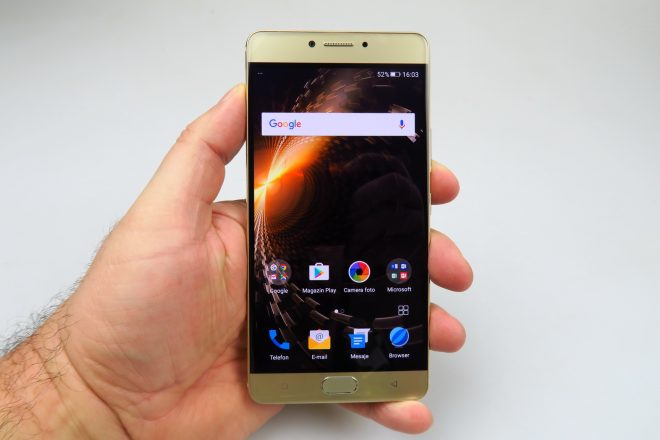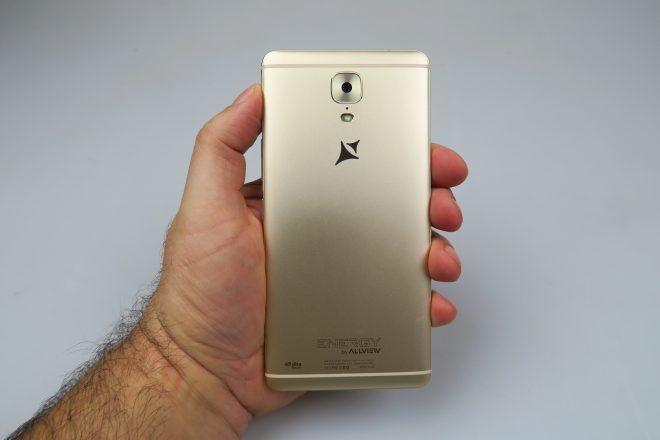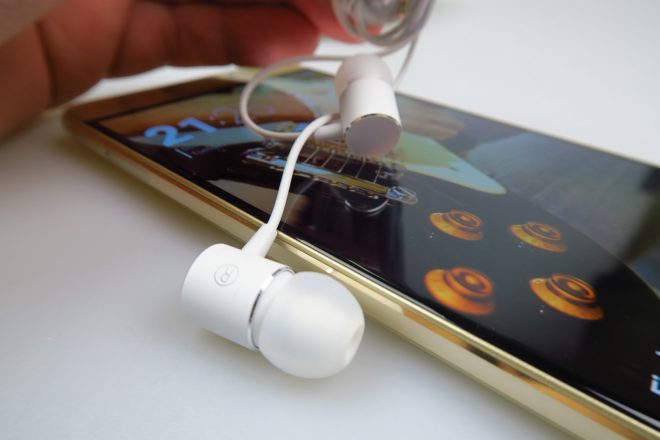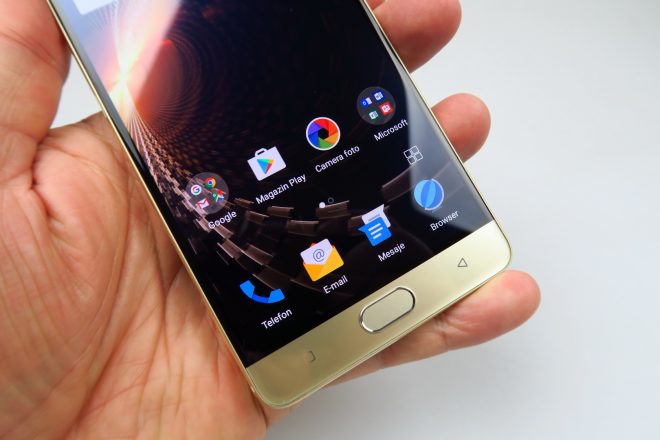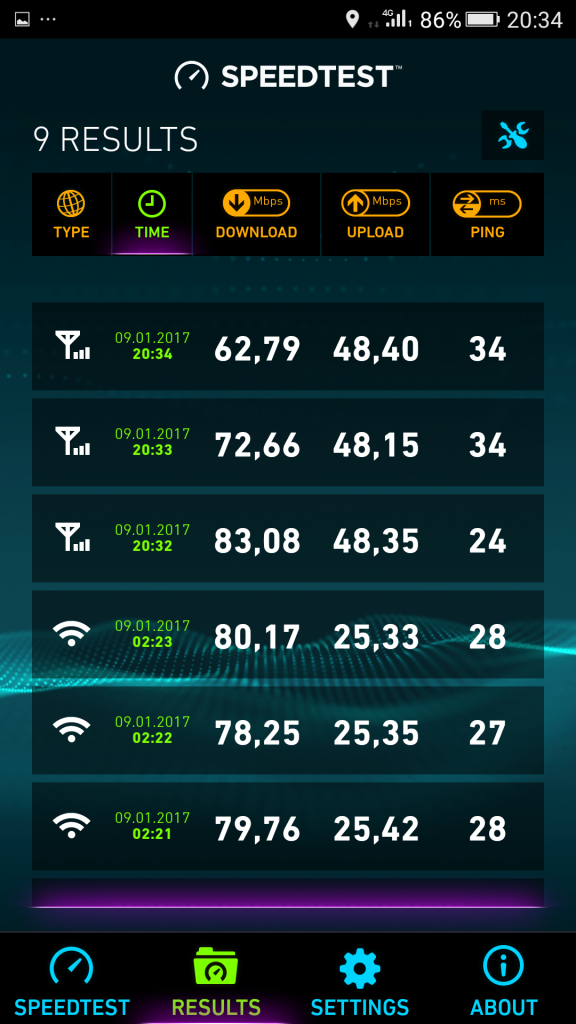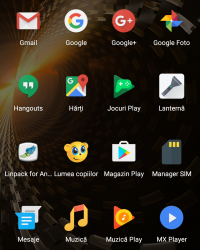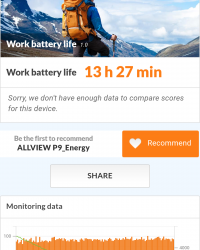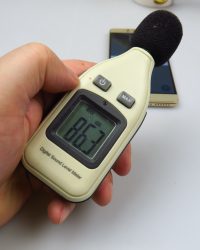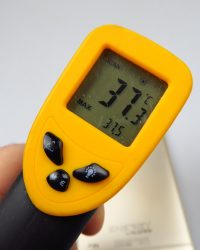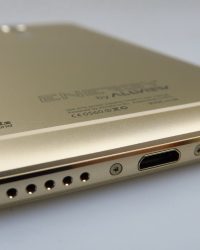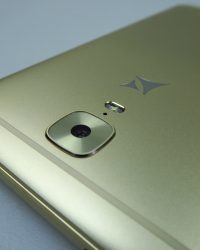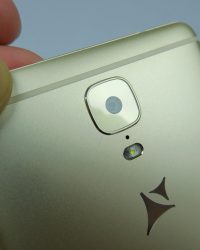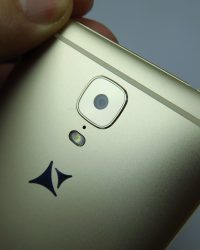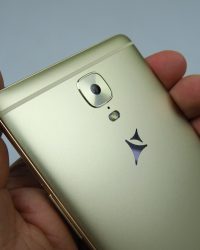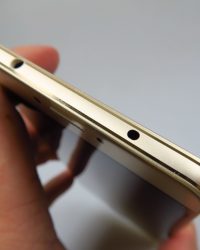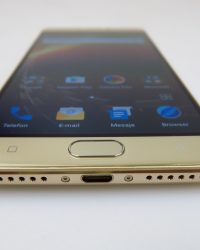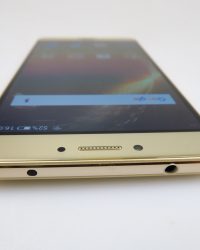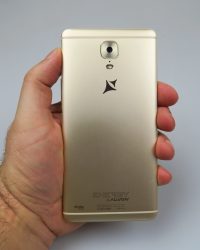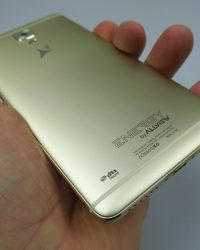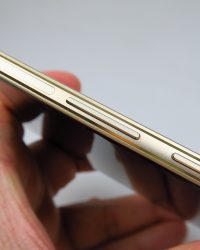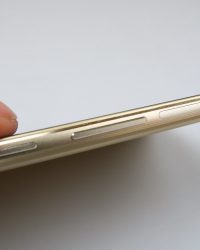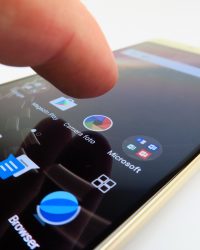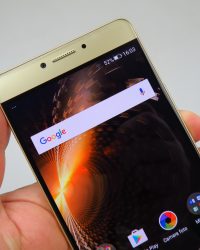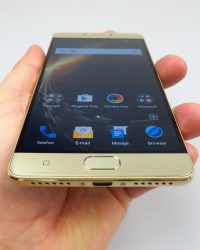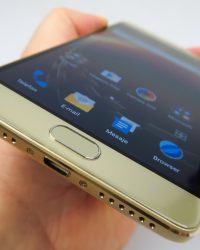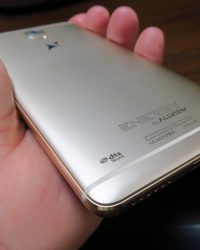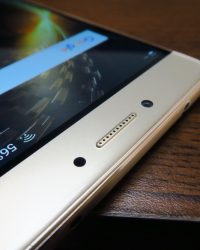Leave it to Gionee and Allview to make and sell a nice battery phone for a good price. I’m talking about the Allview P9 Energy, the locally integrated version of the Gionee Marathon M6 and a solid device all around. This model comes with a 5000 mAh, but also brings high midrange hardware. The original version, Gionee M6 came last summer and the Allview model in September. The former is priced at $400.
We’re dealing with a 5.5 inch phablet that on paper promises up to 4 days of use time. As far as design is concerned, this model adopts a 5.5 inch diagonal and offers an 8.2 mm waistline, plus it weighs 183 grams. Compared to the predecessor, the P8 Energy, it’s clearly more compact, since that one weighs 212 grams and measures 8.5 mm in thickness.
It also feels rather OK in the hand, not overly heavy that’s for sure. It’s got that reassuring feeling that heavier phones have, which is ideal for gaming. The phone offers a solid metal build and it’s made 97% of metal. It relies on aluminum and magnesium for its chassis and it’s got a 2.5D glass panel upfront. The buttons are all comfy here and offer good feedback, including the Home button.
One hand use doesn’t pose a problem, the grip is good and this is quite an elegant machine, with cute metal bands on the side. The back reminds me of the Huawei Mate S a bit and for a battery phone to have such class, it’s a rare occurence, so props for that. Now let’s see if that 5.5 inch AMOLED screen delivers. First of all, it has a Full HD resolution and uses On Cell touch technology. It also makes use of full lamination and has a scratch resistant panel upfront.
Bezels are quite narrow and when put to the test it achieved very vivid colors, close to oversaturated actually. The brightness was a mid level one and we also got wide view angles and a so-so contrast. The level of black was deep and the pixels were of the Pentile Matrix variety. The luxmeter showed us a value of 315 LUX units, which is rather underwhelming.
At least it surpasses the LeTV 1S and ASUS ZenFone 2 Laser, but it also scores below the P8 Energy and its 471 LUX units. It’s always underwhelming for a successor to not surpass the model before it. I expected more, but at least the screen is good indoors and outside it’s not exactly bad either. Settings for the screen include brightness, adaptive brightness, economical backlight, font style, font size and LCD Effect (neutral, cool and warm).
Then there’s Sleep, Skylight and multitasking with the native and card options. The screen is OK, but it could’ve been better. Now as far as the rest of the specs go, we get a MediaTek Helio P10 octa core processor here, a 2 GHz unit with Cortex A53 cores. There’s a Mali T860 GPU in the mix too, coupled with 4 GB of RAM and 64 GB of storage. Allview P9 Energy/ Gionee M6 also brings a microSD card slot and I found it to have good performance and no lag.
It ran games like a charm and apps started up fast. In benchmarks we did fine, scoring above the Allview X3 Soul Pro in Quadrant and below the Huawei Honor 5X. In AnTuTu 6 we beat the Sony Xperia X1 and Allview X3 Soul Pro, but also scored below the ZenFone 3. Overall, I found the graphical benchmarks to be kind of underwhelming and in 3DMark Ice Storm Unlimited we got below the Huawei Honor 7 for example, so maybe next time we’ll get a bumped up CPU too.
On the temperature front, there’s 32.2 degrees registered after running GFXBench and 37.5 degrees Celsius after running Riptide GP Renegade, so there’s no overheating here. Time to discuss the selling point of the machine, it’s 5000 mAh Li-Pol battery. The device is bundled with a 9V/2A charger and on paper we are being promised 555 hours of standby functioning and 1621 minutes of talk time. Or you can get 2 days of heavy usage, perhaps 4 days of light usage.
MediaTek supplies its Pump Express+ tech, used to juice up the phone in 10 minutes well enough for a 10% charge. We did our own tests and the video playback one amounted to 18 hours and 21 minutes, which is great and surpasses previous record breakers like the Lumia 1520 and Ulefone Power. We did score below the predecessor, at 22 hours and 24 minutes and the ASUS ZenFone Max though.
In PCMark, we reached 13 hours and 27 minutes, which is solid and once again only beaten by the 6000 mAh battery of the predecessor and the ZenFone Max. At least we beat other members of the family, like the P6 Energy and P8 Energy Pro. Charging is done in 2 hours and 24 minutes, which is great for a battery phone and about 40 minutes better than the P8 Energy.
Settings for the same power source include a Power Manage, with modes like Normal, Power Save and Extreme Power Save, that only lets you access the basic features, with a black and white UI. There’s also Doze, Smart Power Saving at Night, Fast charge and when all’s said and done, we get a great battery here and a phone that can also be used as a power bank to fuel up other handsets.
On the acoustics front, there’s two grilles at the bottom, but only the left one is actually a speaker. It’s very easy to cover with the hand by mistake and the handset comes with DTS acoustics, manifested through EQ options and settings, particularly the headphone ones. There’s also 5 custom channels to tweak and genre settings. When the speaker was put to work, it deliver a clear and clean sound, pretty high volume and good bass.
High notes were also rendered OK and the voice was solid. You can actually feel the DTS kicking in when it’s activated. Good sound overall. We did a decibelmeter test and achieved 86.3 dBA at the front and back using our typical audio sample, or 93.5 dBA using the game Riptide GP Renegade. All of these results are great and made us surpass the OnePlus One and Galaxy S6, but still we’re no match to the BlackBerry Passport.
The bundled headphones are comfy, loud and clear, they have great noise isolation and a very nice bass. The remote is big, but overall I found this accessory comfy and good looking. FM radio is also here, with a record feature included. With the solid acoustics checking out, let’s see if the camera is any good. The P8 Energy had a pretty good camera, minus some dynamic range problems.
The P9 Energy adopts a 13 MP back shooter with a Sony IMX 258 camera sensor, the same one you’d find on the OnePlus X and Xperia XA. The camera also has an LED flash and upfront we find an 8 MP shooter with a screen flash feature, an upgrade from the P8 Energy 5 MP cam.
The camera app starts up reasonably fast and provides a mid level focus speed, plus fast picture taking and a fluid zoom. Settings and options are plenty, including geotagging, grille, resolution, timer, effects and a big list of Modes:
- Card Scanner
- Mood Photo
- Take Anytime
- Smart Scan
- Translate
- Panorama
- Smart Scene
- Pic Note
- Night
- Time Lapse
- GIF
- HDR
- Pro
- Text Recognition
The Pro mode lets you tweak exposure, ISO, white balance, focus and shutter speed. We proceeded to pull off a wonderful gallery, in mid January. It was a very sunny day, everything was covered with snow and act as a sort of huge lighting source for the pictures. All our shots looked perfect, in both color and clarity. The Panorama was mid level, at 6848 x 1776 pixels and everything was crisp, even with the sun in front of us.
I liked the texture of the snow and also felt that the HDR was a bit too white for its own good. Selfies were pretty good, in clarity and color, but my face came out too white as well. The main camera also has a touch of over sharpening, but nothing truly major. If you zoom in at level one things are pretty OK and we also pulled in some very nice closeups, superb ones actually.
Details were great, the texture of the objects, snowmen and in general things was excellent. Not one bad thing can be said about these pics, maybe aside from the over sharpening part. Focus was good, exposure and dynamic range too. It’s a pleasant surprise and during the day the Allview P9 Energy is able to fight the likes of Huawei Nova and ASUS ZenFone 3 with ease and even beats the Galaxy A5 (2016) a bit.
Low light capture wasn’t all that peachy, with foggy shots, huge light halos and some yellow areas. There were washed out shots when the flash was on and Mr. Blurrycam was there to spoil the fun. I’d say the texture was OK, colors were nice, but there was a blue hue at the top of the pics to spoil everything. I’m not impressed by the low light capture to be frank and it can’t hold a candle to the day time one.
As far as video capture goes, we filmed in MP4 format, in Full HD and somehow the frame rate was 25 FPS not 30 FPS. We reached 14 Mbps bitrate and I found that one of the best things about the filming was the microphone and audio capture. The image was a bit too white and the clarity was rather OK. There’s detail loss when zooming in and the lighting and colors are OK.
The camera can handle motion and moving subjects and there was no focus loss. I liked the exposure change and I did meet with a bit of focus loss, but only in the last video. The details were underwhelming and we even experienced some burn, since the sun was very powerful. I’d say that filming is just OK here and at least it surpasses the typical affordable Chinese handsets’ behaviour.
It can only fight on equal terms with ZenFone 2 and older Huawei Honor models though. Low light video capture is done at 16 FPS, 9 Mbps and it’s very foggy, plus there’s detail loss when zooming in. The image is yellow and once again the microphone was very good. The filming was shaky during the night, there was focus loss and we’ve got a blue hue covering up everything.
With the camera being very solid during the day and not so good during the night I guess it’s time to proceed to greener pastures. The browser used here is either the preinstalled one or Chrome. It’s got an OK speed, but Chrome is clearly faster. The benchmarks are rather modest for Chrome on this handset. The virtual keyboard is the stock one here, quite comfy and with Swype in the mix.
On the connectivity front, there’s dual SIM slots (microSIM), GPS, no Glonass, HD Voice and microUSB 2.0. LTE Category 6 is also here, HSDPA too, Bluetooth 4.0, WiFi Direct and WiFi b/g/n. Infrared is available, letting you use the phone as a remote for a variety of appliances, TV sets and set top boxes. The Dialer features a blacklist feature, speed dial and noise reduction.
Calls are loud and clear, the signal is good and the noise canceling is also solid. We also did a SpeedTest and achieved 89 Mbps in download speed via 4G, plus 48 Mbps in upload, both OK values WiFi was rather modest, with 80 Mbps in download and 25 Mbps in upload. Allview P9 Energy runs Android 6.0 Marshmallow, with a typical custom UI for Allview.
There’s a carousel for multitasking, you swipe down for notifications and swipe up for Quick Settings. There’s also a Split Screen feature here, but only supported by handful of apps. You can use two at the same time and the list includes Skype, YouTube, Calculator and a few more. Widgets are custom, some of them sporting 3D graphics and then you can also tweak effects.
Settings include Do Not Disturb, Security with a Guest Mode and Screen Pinning, plus the fingerprint scanner options. It has a 12 step setup and it’s very fast and accurate. When the screen is off, the button has to be pressed for the scanner to work. Smart Gestures are also available in the Settings area, with functions like Smart Dial, Smart Answer and Double Tap to Wake included.
Finally, Suspend button and LED indicator are also here. The preinstalled apps list includes 56 names, which is quite a lot and a few can be uninstalled. There’s a folder with Microsoft apps, including Word, Excel, PowerPoint, OneNote, OneDrive and Skype, then there’s Bitdefender Mobile Security, Child Mode, Notes, Private Space, System Manager and a Video Editor.
Now it’s time to see the verdict for this device.
Here are the Pros:
- great battery
- nice design
- comfy
- power bank features
- great camera for day time pictures
- good performance
- loud
- infrared connectivity
- good fingerprint scanner
And the Cons:
- low light pics, selfies and video capture aren’t on par with excellent regular picture taking
- screen should be brighter
- modest GPU benchmarks
- WiFi could be faster
- bloatware
- same UI for a while now on Allview devices
Allview P9 Energy/Gionee Marathon M6 is a worthy successor to the P8 Energy and it’s got a great battery, but it’s also a bit on the pricey side. If it drops to $300, it’s a very solid buy in early 2017. Still it’s a top 3 battery phone and it doesn’t even sacrifice the waistline, specs and looks to achieve that. It’s the best Allview phone to buy in early 2017, when it comes to design, specs and even the camera during the day.
Those of you who want to end up charging the phone only twice a week should give this a go.


